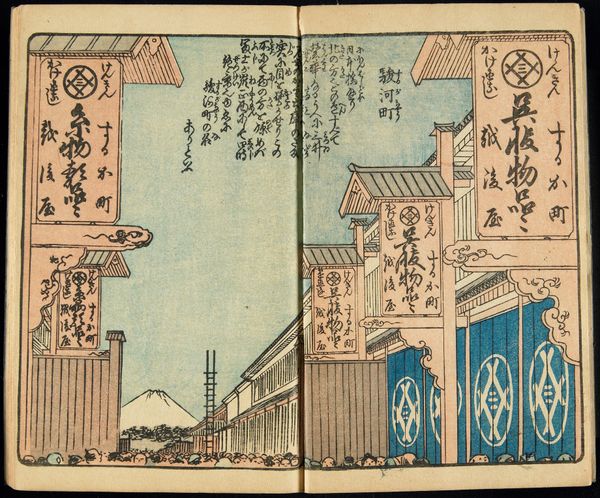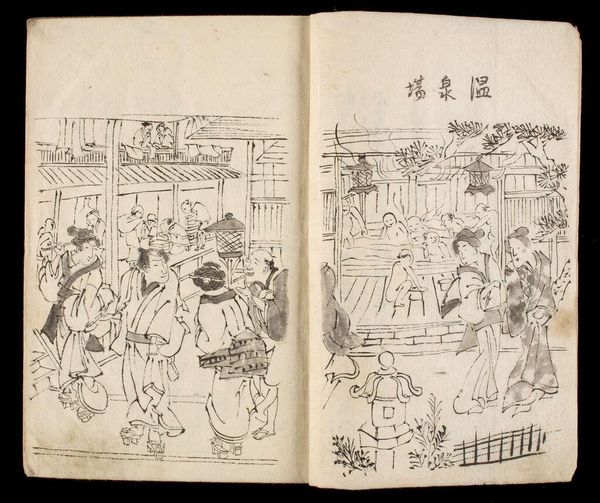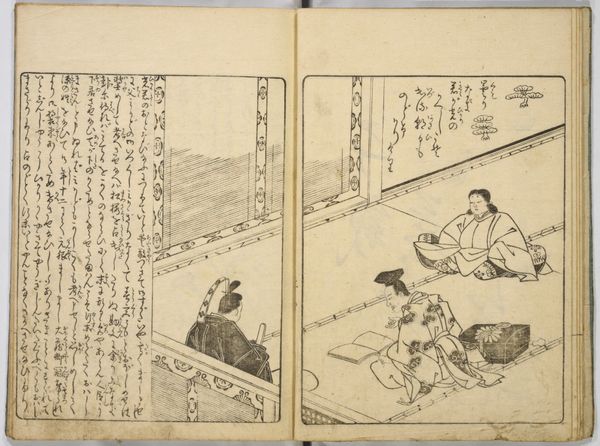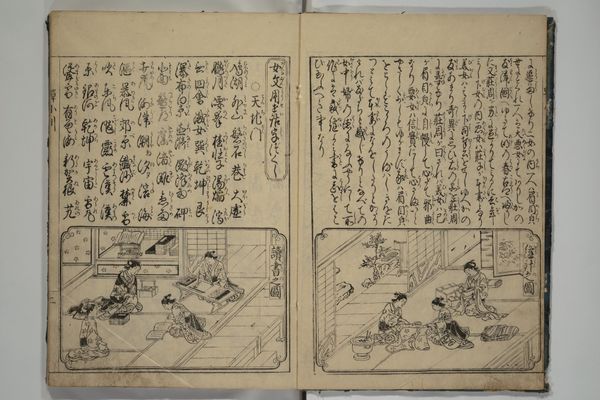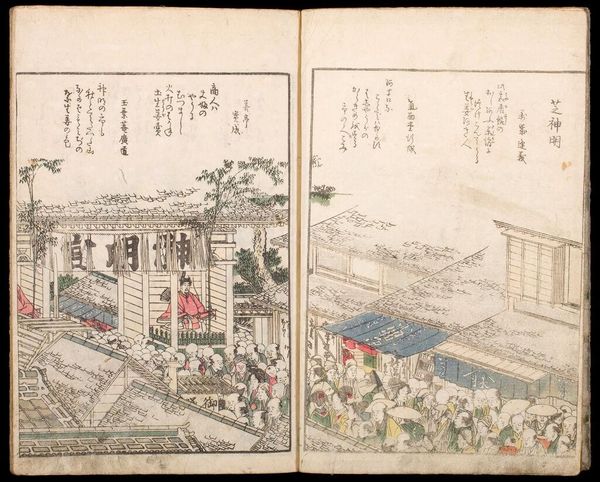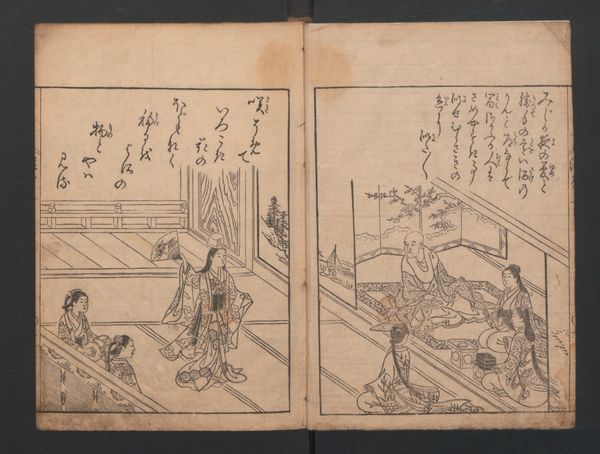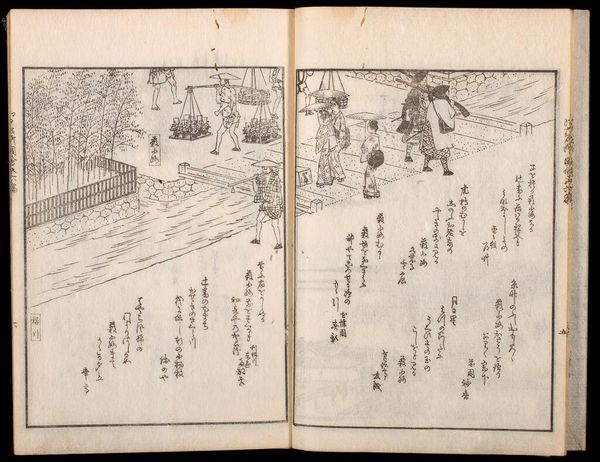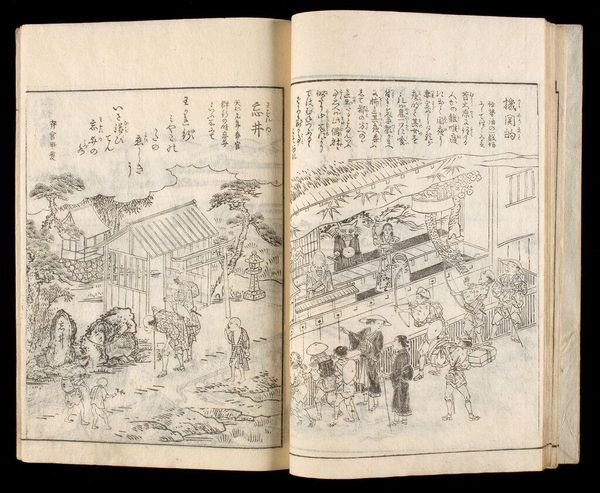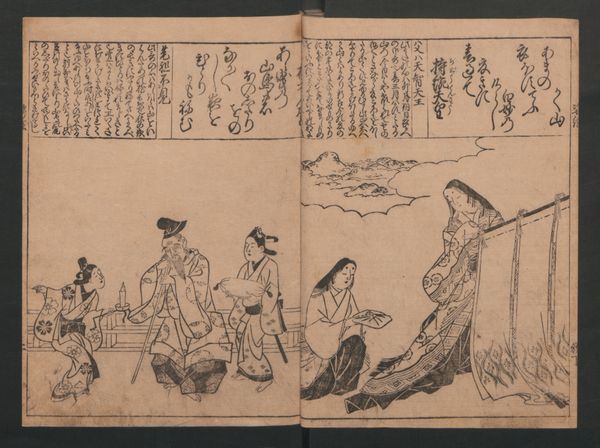
Illustrated Book -Souvenir of Edo- vol. 6 1850 - 1853
0:00
0:00
print, paper, ink, woodblock-print
#
narrative-art
# print
#
book
#
asian-art
#
sketch book
#
ukiyo-e
#
japan
#
paper
#
personal sketchbook
#
ink
#
woodblock-print
#
cityscape
Dimensions: 7 1/16 x 4 13/16 x 3/16 in. (18 x 12.3 x 0.5 cm) (outer frame)
Copyright: Public Domain
Editor: So, this is “Souvenir of Edo, vol. 6”, created sometime between 1850 and 1853 by Utagawa Hiroshige. It’s an illustrated book, a woodblock print using ink on paper. Looking at this image of a bustling street, I’m struck by the contrast between the rigid architectural lines and the seemingly chaotic crowd. What historical insights does this work offer? Curator: This Ukiyo-e print offers a glimpse into Edo period urban life, especially the commodification of everyday experiences through the souvenir album format. Note how the high vantage point and linear perspective were utilized to flatten social hierarchy. Hiroshige does this by emphasizing the density and constructed environment, and how it controls its inhabitants. Are we looking at an idealized, commercial representation, or does this image reflect real societal power dynamics of the time? Editor: That's a really interesting point. The repetition of architectural structures does make the people seem small and insignificant. So, this print, seemingly documenting a common street scene, participates in reinforcing social structures through visual means? Curator: Precisely. Think about who was commissioning and consuming these souvenir albums. Were they meant for local consumption or to present a specific image of Edo to outsiders? Consider how this contrasts with more critical depictions of social unrest that emerged during the same period. Editor: This totally reframes how I see it. Initially, it just looked like a snapshot of daily life, but now it appears to be carefully constructed image promoting Edo, both celebrating and masking the social realities of the time. Curator: Yes, the politics of imagery is central to Ukiyo-e’s role in shaping and disseminating perceptions of Edo society, its class structures and power. It makes me question how the representation of public life shapes collective identity. Editor: Thanks, I hadn't thought about it that way before, how art can both reflect and manipulate social perceptions. Curator: Indeed. Thinking critically about an artwork's public role in shaping the socio-political views of people is central to historicizing art.
Comments
No comments
Be the first to comment and join the conversation on the ultimate creative platform.
